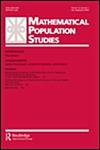抽样后调查样本量的确定:以2020年中国为例
IF 1.3
3区 社会学
Q3 DEMOGRAPHY
引用次数: 1
摘要
摘要点算后调查用于评估人口普查的质量。要进行此类调查,必须确定待调查样本的大小。如果样本设计需要几个层次,则设计效果(即给定样本量下两个源估计器的方差与单个源估计员的方差的比率)允许进行间接计算。另一种方法是对给定的样本量使用抽样方差公式。样本必须有足够的地理分区总数,这些分区太小。以2020年中国人口统计后调查为例,对样本量进行了完整计算。本文章由计算机程序翻译,如有差异,请以英文原文为准。
Determining the sample size of a post-enumeration survey: The case of China, 2020
ABSTRACT Post-enumeration surveys are used to assess the quality of censuses. To set up such a survey, the size of the sample to be surveyed must be determined. If the sample design requires several strata, the design effect, which is the ratio of the variance of the two-source estimator to the variance of the single-source estimator for a given sample size, allows an indirect calculation. Another method is to use the sampling variance formula for a given sample size. The sample must have a sufficient total number of geographic subdivisions that are too small. A complete calculation of the sample size is implemented on an example from the 2020 Chinese post-enumeration survey.
求助全文
通过发布文献求助,成功后即可免费获取论文全文。
去求助
来源期刊

Mathematical Population Studies
数学-数学跨学科应用
CiteScore
3.20
自引率
11.10%
发文量
7
审稿时长
>12 weeks
期刊介绍:
Mathematical Population Studies publishes carefully selected research papers in the mathematical and statistical study of populations. The journal is strongly interdisciplinary and invites contributions by mathematicians, demographers, (bio)statisticians, sociologists, economists, biologists, epidemiologists, actuaries, geographers, and others who are interested in the mathematical formulation of population-related questions.
The scope covers both theoretical and empirical work. Manuscripts should be sent to Manuscript central for review. The editor-in-chief has final say on the suitability for publication.
 求助内容:
求助内容: 应助结果提醒方式:
应助结果提醒方式:


